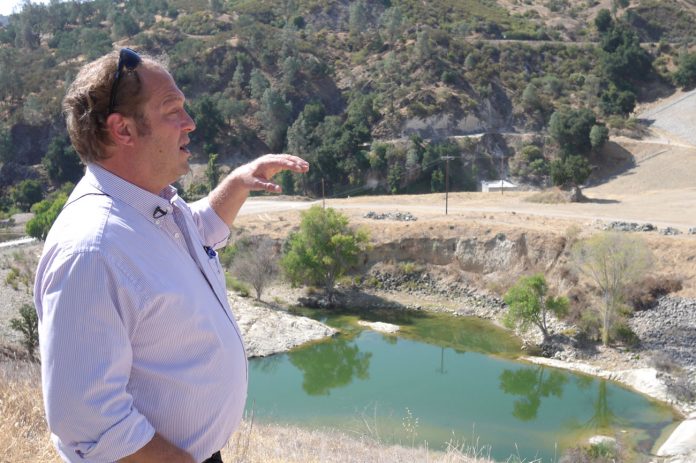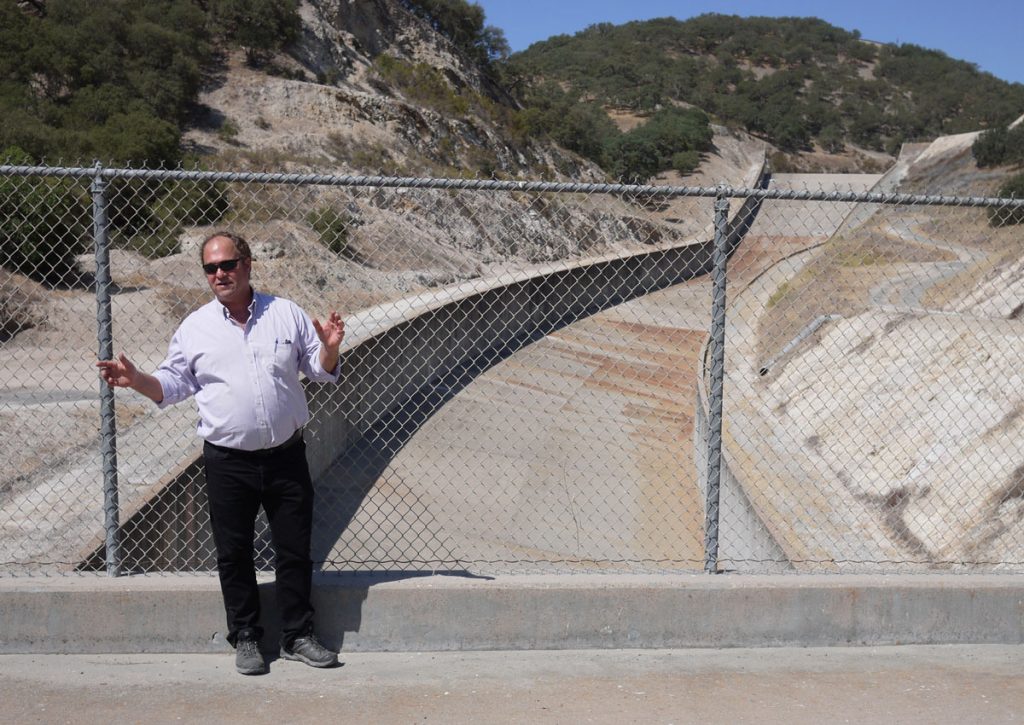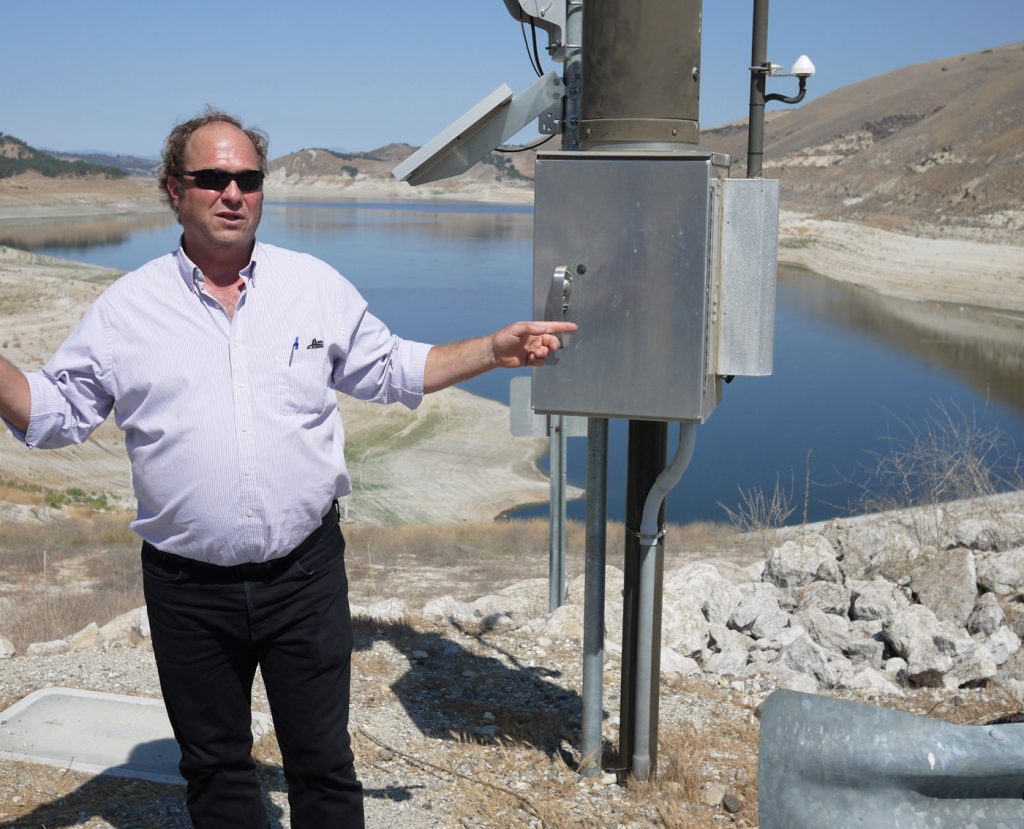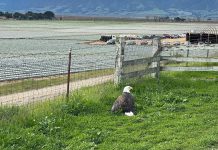
MONTEREY COUNTY — State and county leaders recently took a tour of Nacimiento and San Antonio dams to get a first-hand look of the impacts of drought and facility conditions.
Both reservoirs have reached near record lows, with Nacimiento at 14% capacity and San Antonio at 7%. Water releases from the reservoirs have ceased as of July 28, with the visible effects in the north county being a drying of the Salinas River.
Though the 7% at San Antonio amounts to 50,000 acre-feet of water, it can’t be released.
“We can’t get the release out of here to aid the flows,” said Brent Buche, general manager for the Monterey County Water Resources Agency, during the Aug. 11 tour.
Buche added, “We operate the systems together in order to get water into the Salinas River and down to Salinas to our diversion facility. It requires making releases from both reservoirs.”

Ongoing drought conditions may cause consideration of water usage cutbacks if significant rainfall doesn’t take place in the upcoming year.
The flow of water from both reservoirs is critical to the county, which relies on them to refill the groundwater as an independent region rather than having water come in from the state.
“Monterey County does not receive any of the state water system water,” said Chris Lopez, county supervisor.
“The entire county is self-reliant on their water source,” Buche added. “We do not get water from the state and we do not get water from the feds. So when we meet with our state representatives, we remind them of that.”

State Sen. John Laird compared the current drought to the one from 2011 to 2015. He noted getting water quicker with drought relief projects would serve the long-term interests of the region.
Last week’s tour included discussion of capital improvements for both dams to increase their capacity, which would cost $150 million because of regulatory requirements.
Buche said the condition of the dam spillways, with San Antonio’s having visible mineral staining, could prove hazardous in the event of a large storm in the future.















